Work continues as we rebuild the foundation wall of the old Glen Villa Inn.
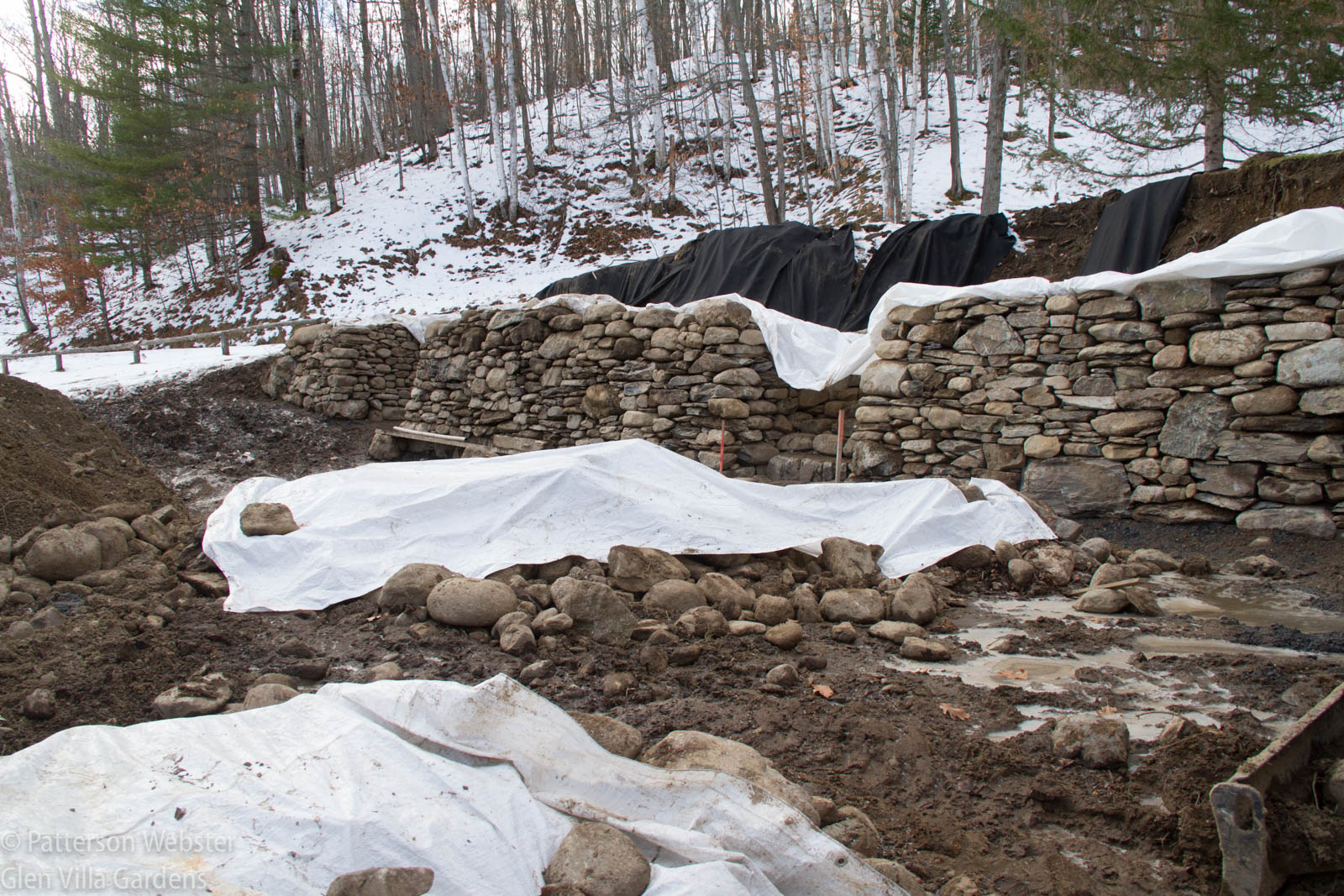
The white sheets are put on at the end of each work day to protect against whatever the weather brings.
I first wrote about this project a few weeks ago in a post titled We are (Re)Building a Wall and in that post I recounted some of the history of the old hotel.
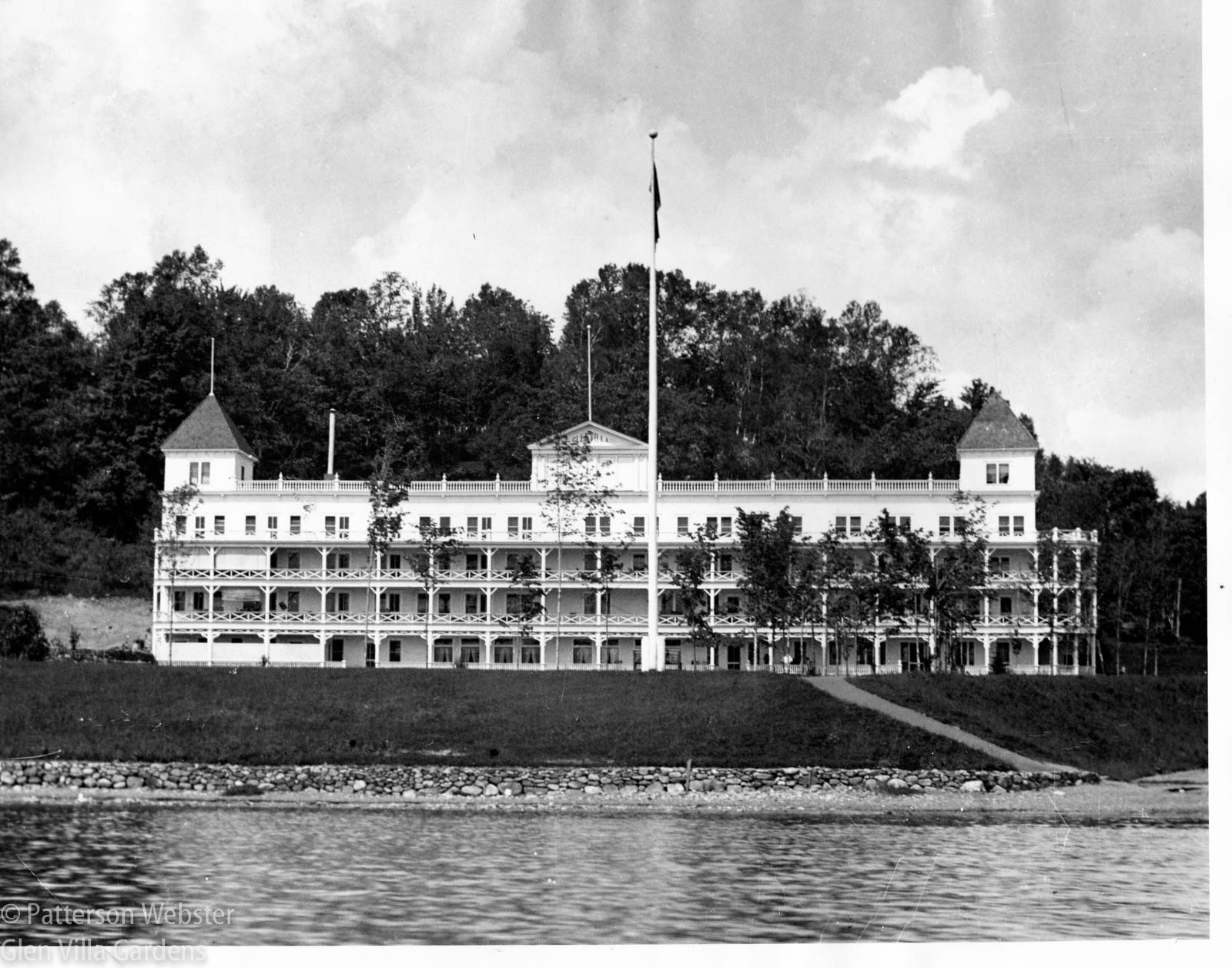
This black and white photo shows the hotel as it was in its heyday. Remnants of the asphalt walk leading up from the beach to the front of the hotel still exist.
Last week I wrote about some of the treasures we unearthed as the wall came down.
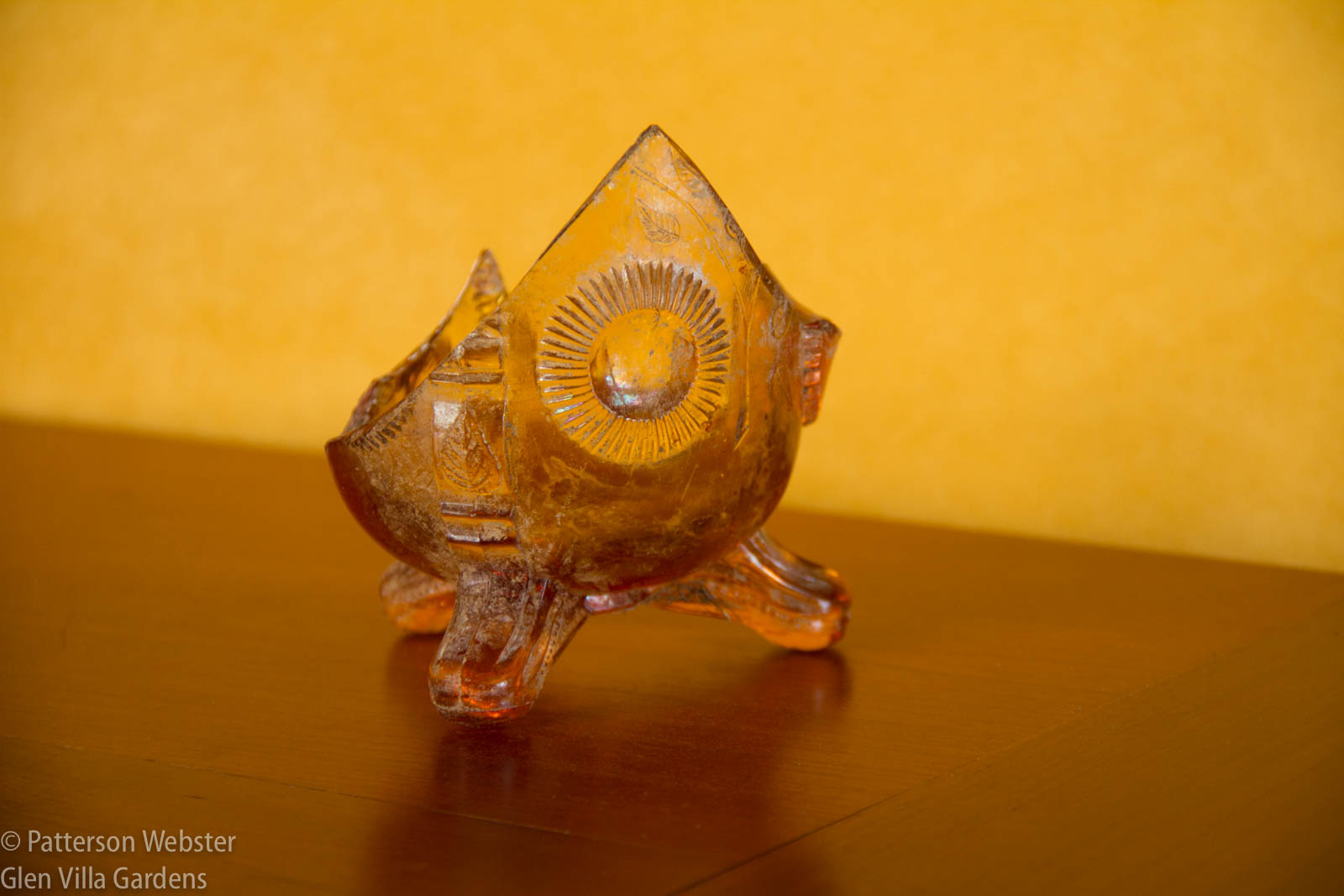
This week brought more treasures and even more surprises.
The story of Glen Villa Inn was familiar to me before we acquired the property where we now live. This is not surprising since tales about it colour the history of North Hatley. I wasn’t prepared, though, for the impact that the hotel ruins had on me. They were right on our property, at the end of the big lawn, and they were such an impressive sight that they brought those familiar stories to life.
I began to do research, trying to discover as much as I could about the hotel and the property we now own. I collected or was given old postcards and photographs showing some of that history, including an original brochure produced by the man who built the hotel, George Albert LeBaron.

My father-in-law found a copy of this brochure many years ago and gave it to my husband and me when we moved into our house.
One of those colour postcards showed a strange flower arrangement, four posts or tree trunks covered with Virginia creeper or some type of ivy surrounding what seem to be annuals planted in a big metal tub.
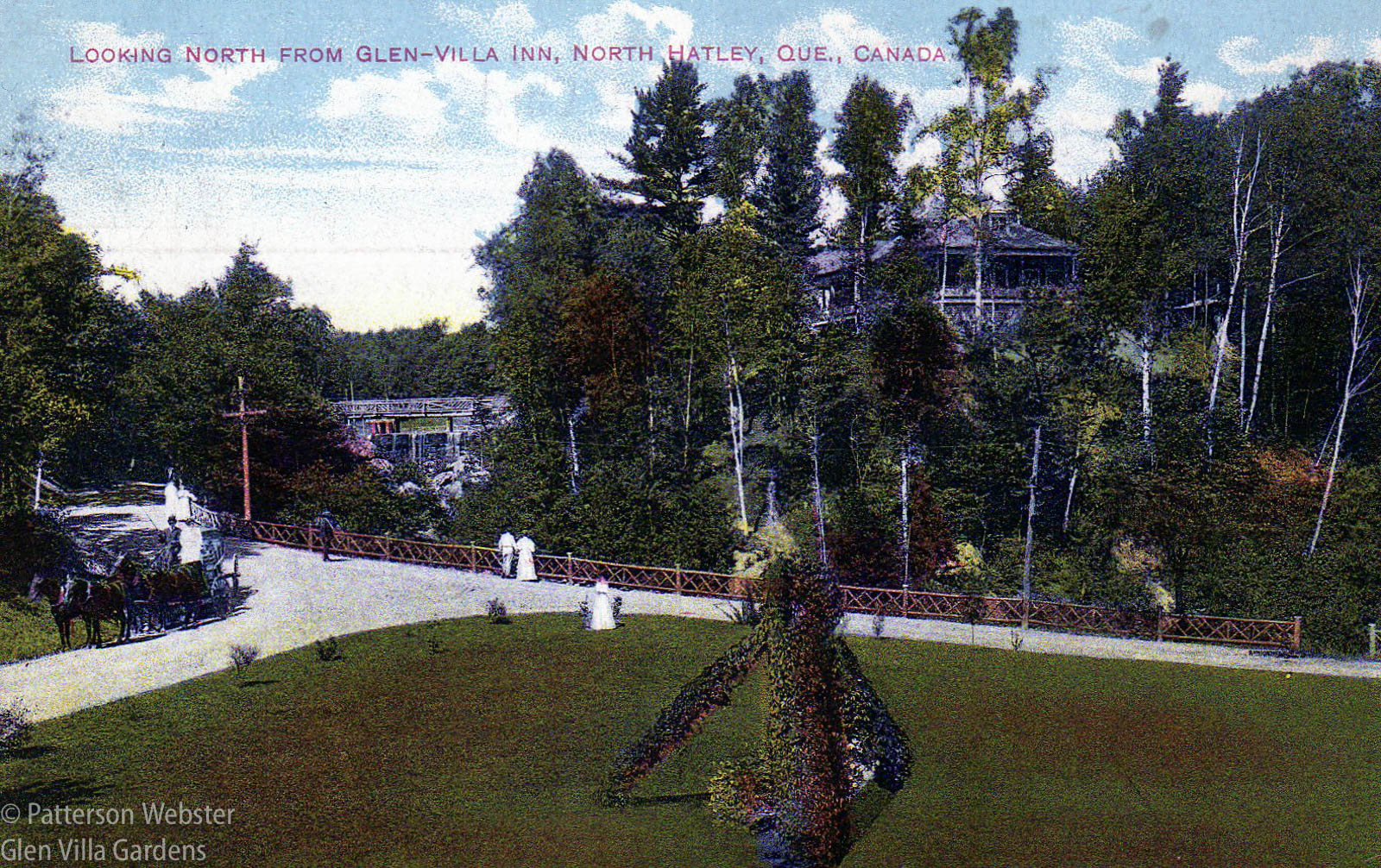
Along with the strange flower arrangement, this colour postcard shows a rustic bridge over the dam, the waterfall and hotel guests out for a stroll. The building on the hill in the background was the clubhouse for the hotel’s 9 hole golf course.
This week, thanks to enquiries that the filmmaker Louise Abbot made to Jody Robinson, the archivist at the Eastern Townships Research Centre, I saw images of the hotel I’ve never seen before. One black and white photograph shows either the same flower arrangement or one that looks very similar. On the flat ground below, it shows a tennis court and the building that housed a bowling alley and dance hall. It also shows a boardwalk or ramp that I’ve never seen pictured. I haven’t figured out where the walkway led… a mystery still awaiting a solution.
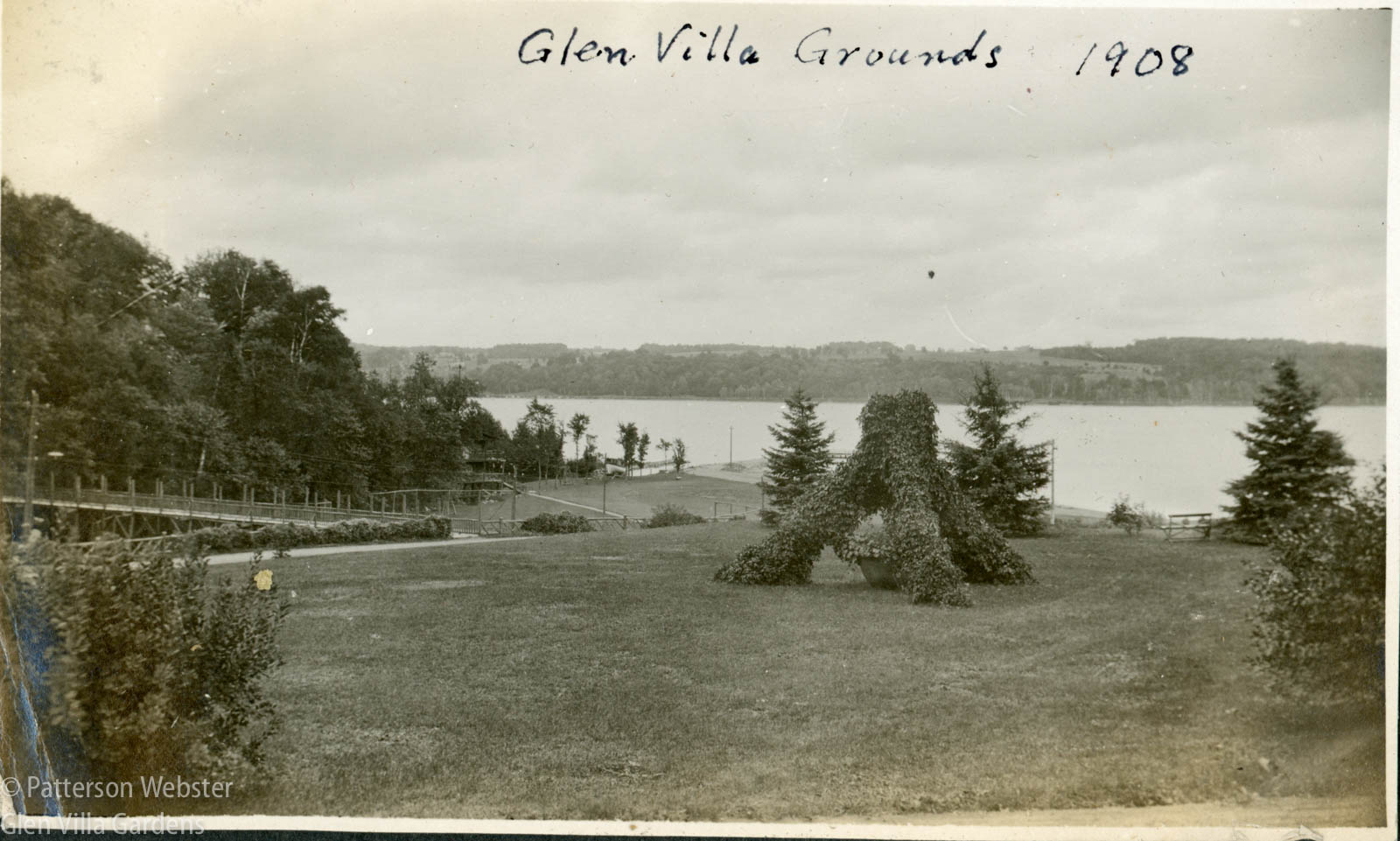
The postcard identifies the location and the year that the photo was taken.
But undoubtedly the most exciting photograph that Jody unearthed came from the archives of the Lennoxville-Ascot Historical Society. It shows the hotel after it burned in 1909.
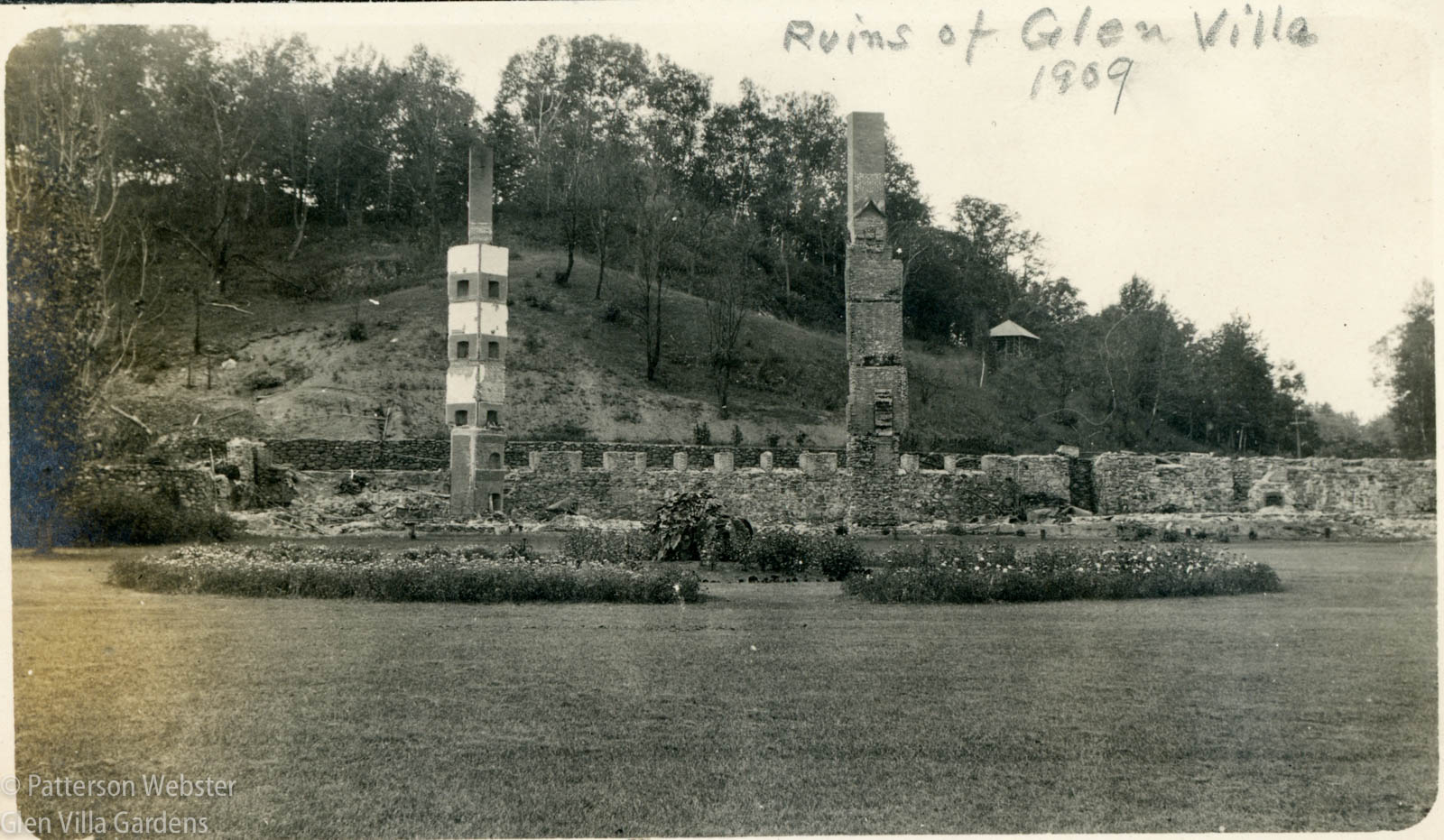
The two tall structures must be the remains of chimneys. Notice as well the gazebo on the hillside.
This photo was taken the year the hotel burned to the ground, shortly before it was due to open for the summer season. The wall extends farther to the left and right than we thought. It includes the remains of a fireplace and steps leading up the hill, and ends in a castellation that is a complete surprise.
I know the topography of the land so well now that seeing the almost bare hillside behind the hotel ruins came as a surprise. But the shape of that hillside was totally familiar…. its shape is evident even now.
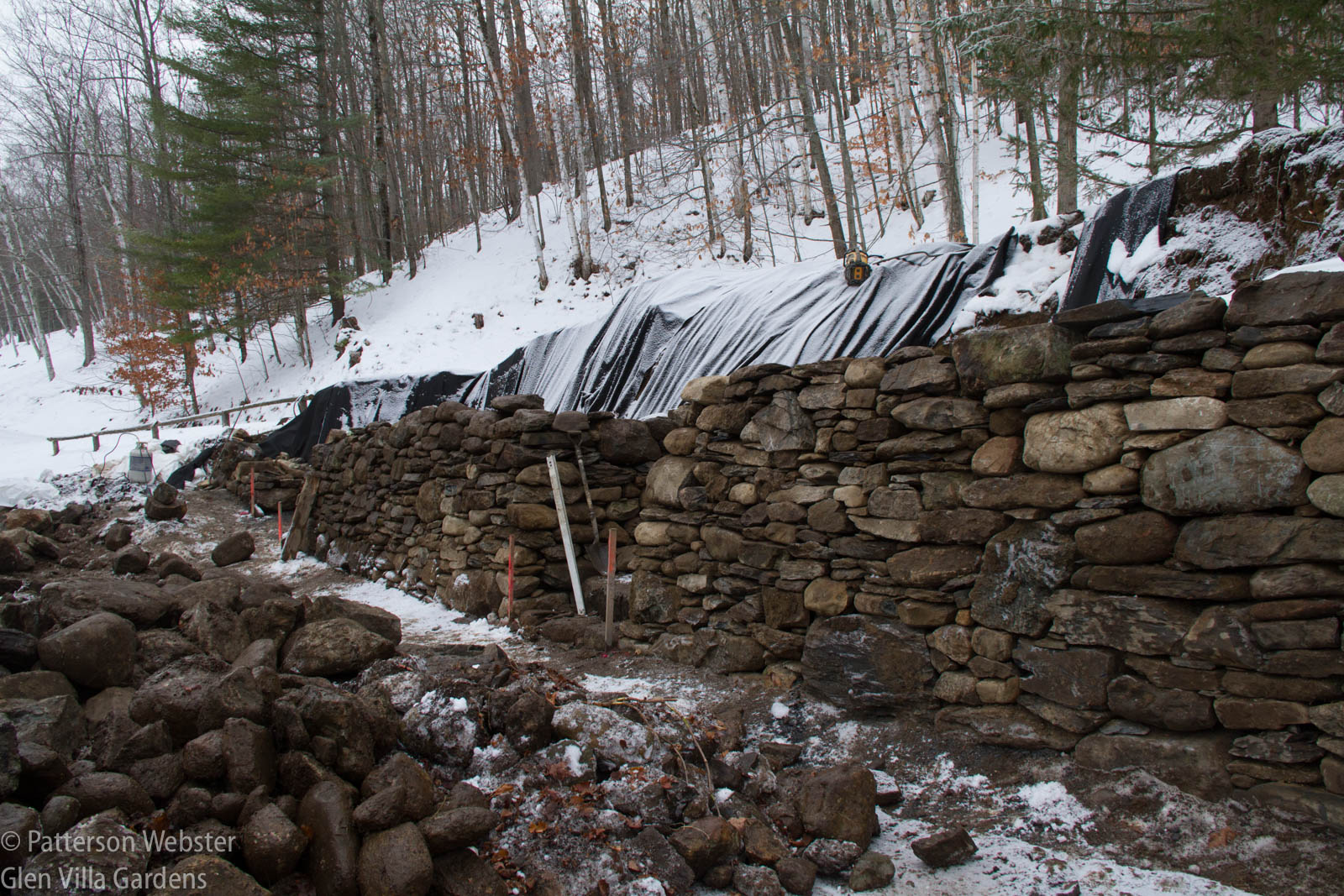
This photo shows the same triangular hilltop behind the hotel, now much more heavily wooded.
We aren’t planning to replicate that wall… only a part of it now remains. But what look like circular flower beds lining the drive that turned in front of it offer interesting possibilities…






This reminds me of an event two years ago. We went to stay in an hotel which my family had owned in the early 20th century, which was fascinating in itself.
And then it snowed – and looking from the bedroom window the original outlines of the gardens, which I had only previously seen in family photographs, emerged in front of us as ghostly outlines in the snow.
That’s a fabulous memory, Anne. What an amazing moment seeing those outlines must have been.
Ha! I’ve managed to Comment. It was and I love hearing about your explorations. The past is so poignant. Do you wonder what will be found of you in 100 years time? xxx
I knew you would finally defeat Disqus. Congratulations!
Do I wonder what will be found of me in 100 years time? Literally, nothing since I plan to be cremated. But what will I leave behind in the memory of others? Apt question: I’m re-doing my will right now!
You’ve made your mark on your land. Something of that will survive (I wonder what?) and someone else will be thinking of you and what you did there. There’s what may be found of you…
So remarkable to be able to find more echoes of the past in landscape and visual form. And isn’t it a gift to learn more about your place in the world, a place that’s special, indeed?
I’m going crazy with excitement about these discoveries, Lisa. The echoes are really loud! And I agree, it’s a gift to learn more about my place in the world, here on the ground and more generally.
Fascinating Pat. many thanks for all the digging – both physical and historical.
It’s a treat for me to do this, Judy. I’m meeting Jody at the ETRC next week and who knows what will turn up?
A great find…..nice surprise!
You are SO right.
The previous owners of our house left behind two photos of the house, taken in the 19th century. Very fun to see the house as it used to be, and the wooded hill behind our house bereft of trees. That weird flower arrangement looks like a very ungainly tripod, such as would be used to suspend a cooking pot over a fire. But why?
Land in the country was used so much more in the 19th and early 20th centuries than it is now. Aerial photos of this area make it look like there is no forest at all, where contemporary photos would show the reverse.
Yes, it does look like a contraption for hanging a pot over a fire… hadn’t thought of that comparison. I wonder if photos from other hotels of the era would show something similar… I may be off on another search!
Reading about your explorations of the old hotel is fascinating, Pat. As my farm house here, the main barn, and the bake house, were all constructed circa 1850, we have also unearthed some interesting artifacts from time to time. We have a number of horse-drawn farm implements that are mouldering away where the last farmer who used them, decided to park them. Some tools left in the barns also give a hint of what it was like to eke out a living on these farms. Thanks for sharing your exciting finds!
Thanks for getting in touch, Cliff. We have a similar small collection of old farm equipment, nothing exciting though. My father was raised on a farm in Virginia and shortly before he died, all the old implements went to a museum where they were thrilled to receive them. So don’t think the ones you have are useless!